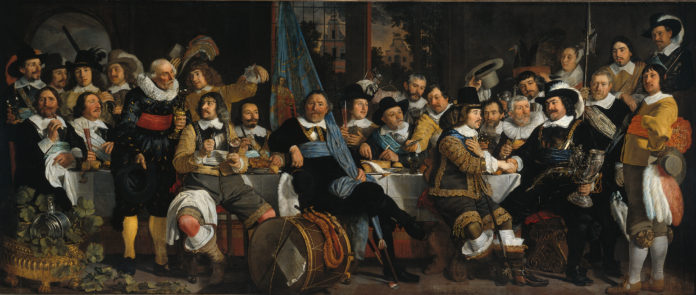Hi there, friends! In the previous lesson on Rebbe Nachman’s brilliant tale, we took leave of our hero as he settled into a corner of the grand ballroom in the beautiful and orderly palace of evil to watch the proceedings. This is where we join him once again.
He (the viceroy) saw that the king commanded them to bring the queen.
In a moment, we are going to read that this queen is the lost princess. The tzaddikim of Breslov reveal that in this line, Rebbe Nachman is hinting to an incredibly deep idea. In the first few articles of this series, we explained that the lost princess represents the fire of youth and the flames of innocence, passion, and excitement that grow dim during the journey from childhood to maturity. At length, we attempted to paint a universal portrait of the root of this loss which expresses itself in our lives, leaving a gaping hole in our service of God and the natural Jewish drive toward matters of faith and holiness. While we treated the loss of this fundamental element of our existence at length, we have not yet touched upon what happens to the lost princess in the place to which she is taken. The general assumption of the reader is that the lost princess is being held in a dark dungeon in the underbelly of an ominous and forbidding palace, where she spends her days weeping over her situation and waiting longingly for a savior. However, here Rebbe Nachman teaches us that when we lose the princess of youthful passion and excitement for a vibrant relationship with the Master of the world, she isn’t locked away in an abandoned compartment of our heart. What happens to the lost princess upon her capture by the realm of “the no-good one” is that she becomes the queen, the source of life and vitality to the opposing powers in the struggle over our identity. This is very deep.
You see, throughout the process of becoming an adult, there is usually a direct correlation between the loss of passion toward matters of the spiritual and transcendent and the intensification of physical desires and a drive toward this-worldly success. This means that when the fire of youth is captured, it is not extinguished. It is rather usurped, its treasures seized and channeled for expression in material-oriented pursuits. The mitzvah or yom tov which, only a few short years ago, would evoke a sense of wonder, pleasure, and comfort in the child now conjure cynicism, apathy, and perhaps even disdain in the mind of the teenager. This isn’t to say that he has lost the ability to feel wonder, pleasure and comfort. It is only that his or her perception of worthy catalysts of those feelings have changed. As the years progress and the young adolescent settles further and further into what appears to be a physical reality, the notion of a spiritual realm gradually loses its draw, overshadowed by ever more tangible pursuits. This is what Rebbe Nachman is teaching us in this part of his tale: oftentimes, the lost princess is hidden right under our very nose. The objective is not merely to find out where she is being held; she is hiding right out in the open. After the developmental process of self-discovery that takes place over our journey through the deserts, fields, and forests of avodas Hashem, we come to the realization that the true objective is to free her from her disguise and bring her home.
They went to fetch her, and there was a great uproar and tremendous joy as they brought forth the queen.
As we have explained, the lost princess has become the source of energy and vitality for the pursuit of this-worldy, physical gratification. It is no wonder that when she enters the room there is great joy and a proliferation of energy.
The orchestra played and choir sang.
This line is yet another hint to the role the lost princess has been forced to play in the palace of evil. In many ways, the body-soul dichotomy finds a beautiful parallel in an orchestra and dancers. Much like the soul provides vitality for the body, serving as a cause to its effect, an answer to its question, music serves as the life-force for those whose spirits are moved to dance. Thus, in the relationship between music and dancers, music can be compared to the “soul” and the dancers as the “body.”
The viceroy has come to the realization that the princess had become the queen of the realm of impurity, her charm not destroyed but rather misappropriated. It is increasingly obvious to him, then, that the music played upon her entrance to the ballroom is an expression of what she represents to the constituents of this evil place. Just as music is the “soul”, the life-force and vitality of those who dance to its rhythm, so has the holy passion and excitement of the lost princess become the “soul” of the evil realm, the drive we feel toward the pursuit of physical gratification, material success, and increasingly self-centered aims.
They set up a throne for her and she sat next to the king. She was the lost princess! As soon as the viceroy saw her, he recognized her.
After a long journey of self-improvement and deep introspection, the viceroy has finally discovered the lost princess. Although her powers have been usurped by the enemy, she appears to be otherwise unharmed. The burning question now is – how to bring her home?
The queen looked around, and, seeing someone lying in a corner, recognized him.
Although they haven’t seen each other for such a long period of time and they certainly looked vastly different; the viceroy from his arduous journey and the princess from her transformation into the queen of the evil kingdom, the inner tzaddik and the passionate fire of youth recognize each other immediately. All it takes to remind the princess of her true identity and the beauty she carries within is for her to catch a glimpse of the inner tzaddik, the place where every Jew maintains an unbreakable bond with the Master of the world. The viceroy’s nobility, dignity, and grace shine brilliantly in contrast with the cheap imitation by which she is surrounded. All at once, her identity as the king’s lost princess comes rushing back to her.
She stood up from her throne and went over and tapped him. “Do you know me?” she asked.
Here Rebbe Nachman teaches us that oftentimes it is the holy princess still adorned in external robes of impurity who takes the first step in encountering the viceroy. After years spent pursuing physical gratification and material success, we slowly get the feeling that our vitality and life force couldn’t possibly have been given to us for this purpose. Our lives our too short and the pleasures of this world too transient for this to be the grand purpose of life. Shyly, filled with uncertainty, the princess of passion approaches the viceroy of untouched holiness who sits at the essence of each and every Jew. The question she asks is bursting with both sadness over what has happened to her as well as great hope that she may return home to her father once again. “Do you recognize me?” she asks. “Are you able to see me for who I really am? Do you believe in your ability to redeem me from this place, to extract me from this misery and reinstate me as the pure, refined, and holy princess that I am supposed to be?” When this encounter occurs in their inner world, many make the terrible mistake of ignoring her. Some don’t recognize the passion at all, seeing it as being inherently evil and damaging. Others, even if they may indeed recognize its holy essence, have long ago give up on the notion that it can possibly be channeled and used once more for holiness. “What can be positive about the fires of lust, jealousy, anger, greed, and hate that burn within me?” we think. “How can these expressions merely represent garments for a deep fire of holy desire?” Unable to come to this belief in our ability to change, we give up. If we cannot honestly tell the princess that despite the role she has unfortunately come to play in this terrible place, her beauty is still recognizable, then our mission ends right here. The viceroy’s success depends on how he answers this question.
“Yes” he replied. “I know you. You are the lost princess.”
And so, our tale continues.
See you next time!







